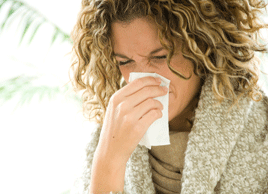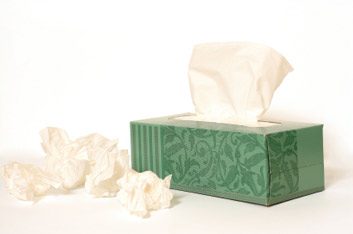
What’s the truth behind old wives tales?
Our quest for a simple solution to the garden-variety annual bug seems never ending, as “the cure for the common cold” continues to evade medical science. So most of us continue to rely on old-fashioned advice that has always seemed to work-from hot baths and herbal teas to chicken soup and fresh garlic.
But how much truth is there, really, to these old wives tales? Dr. Patricia Mirwaldt, of the BC College of Family Physicians, helps us sort fact from fiction and explains how much scientific evidence really exists to support these claims.

Chilly weather will make you sick
While the notion that cold weather can bring on a cold seems to make sense-we even call the shift into winter “cold and flu season“-it turns out that “it doesn’t matter how cold the temperature outside is,” says Mirwaldt. In fact, she says, it’s probably not outside but inside that counts: Spending more time indoors when the weather turns cold means we’re spending more time in closed-and potentially crowded-environments. There’s simply more chance you could catch something from other people.
So don’t skimp on time outdoors just yet-in fact, it’s probably good for you to get some fresh air. And forget that nagging warning from your mother, too-going into a winter’s day with wet hair isn’t going to make you sick, either.

Sneezes: The bearers of bad news?
While many of us assume that fits of sneezing mean a cold is coming on, it’s not entirely true. Sometimes sneezing is a signal that we’re starting to get sick, says Mirwaldt, but it’s not always the case. People sneeze for all sorts of other reasons-exposure to allergens, such as animal dander and dust, for example. Even something as simple as bright sunlight will make some of us sneeze, while others fall into fits of snorts after a big meal. So don’t panic if your nose starts to tickle.

“Starve a fever, feed a cold”
There’s a bit of truth to this one, says Mirwaldt-but only because we usually lose our appetites when we get sick. “It’s really just a common sense recommendation,” she says. “But overall it doesn’t really matter what you do, if you eat more or less than usual.”
If you’ve been hit with a cold or flu, the best plan is to eat healthy, whole foods, in whatever quantity you are most comfortable with. It’s also important to bump up your intake of fluids and keep your hydration in check.

The snot spectrum
It may sound gross, but it’s a commonly held belief that the colour of your “tissue deposits” can tell you a lot about your health. Green or yellow mucus seems to hint at an infection-a tissue full of green goo makes us feel that there must be something seriously wrong. But actually, the colour of your mucus-which was once considered a telltale sign of a bacterial infection-won’t reveal very much in the way of a cold or flu. “This is an interesting one for people to know about, because a decade ago doctors almost always used the colour of your mucus as a way of saying if you had a bacterial infection,” says Mirwaldt. “But overwhelmingly, almost all colds are viral colds.” It’s bacteria that produce the strange colours you see, not a virus. It’s more likely that the colour of your mucus is related to the foods you’ve eaten or chemicals you’ve ingested, says Mirwaldt.

Feeling “run down”
When we fall ill, it seems as though the first thing we point to is “being run down”-feeling tired and generally worn out. “There is some validity to that,” says Mirwaldt, “especially if you haven’t been sleeping or eating well.” But you still need an infectious agent-almost always a virus-to actually become sick. The best defence, says Mirwaldt, is to wash your hands and avoid sharing drinks with other people.
To avoid that “run-down” feeling, particularly during cold and flu season, make sure that you’re eating plenty of healthy, immunity-boosting foods, getting at least half an hour of exercise every day, and leaving yourself enough time to get a good night’s rest.
Related:
• Top 10 myths and truths about viruses and bacteria
• Do you have a cold or flu?
• 5 new discoveries about the common cold
